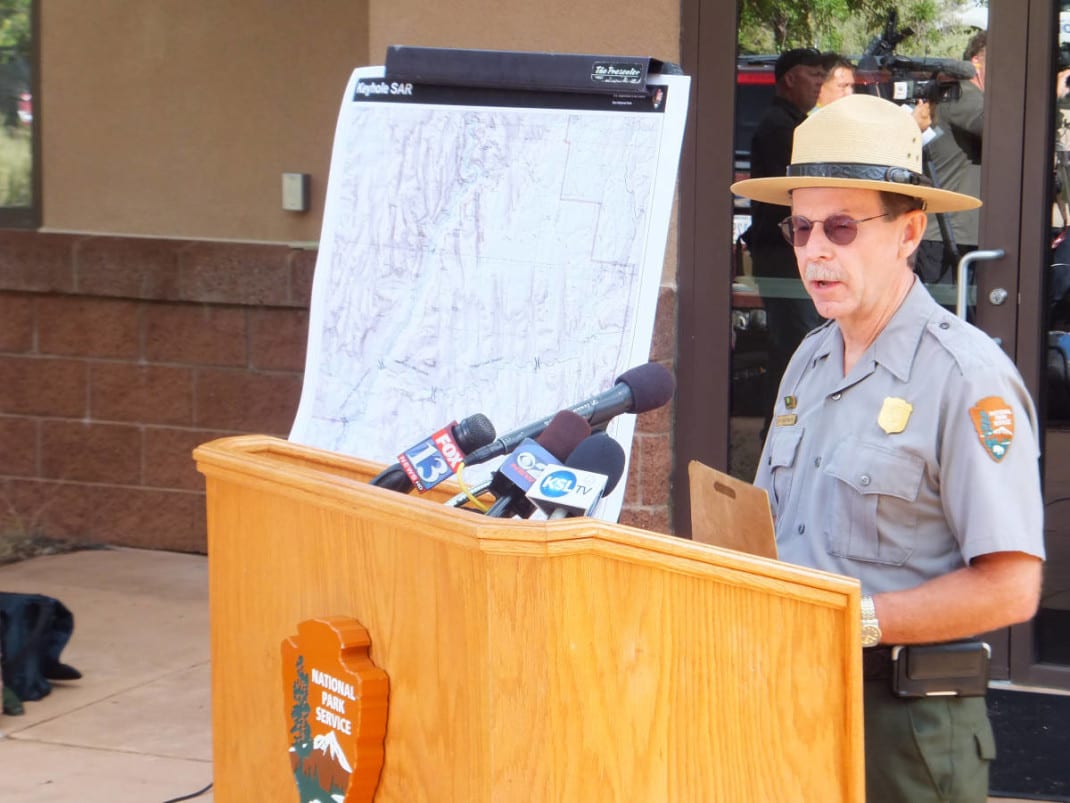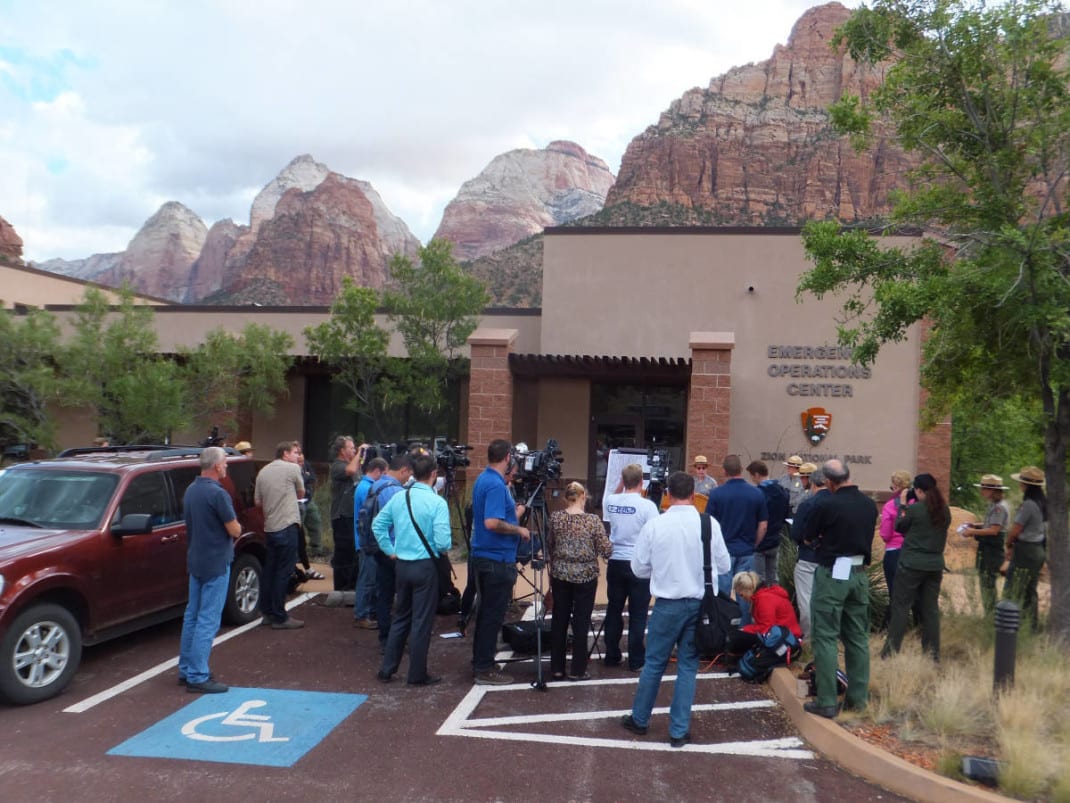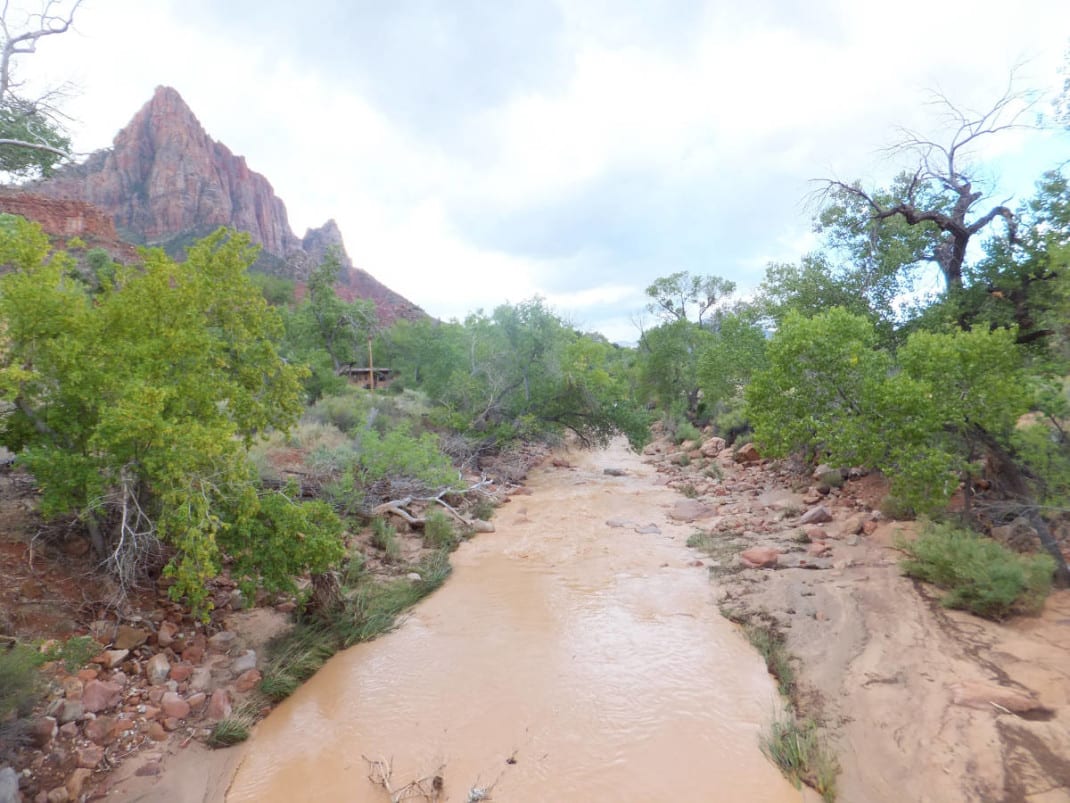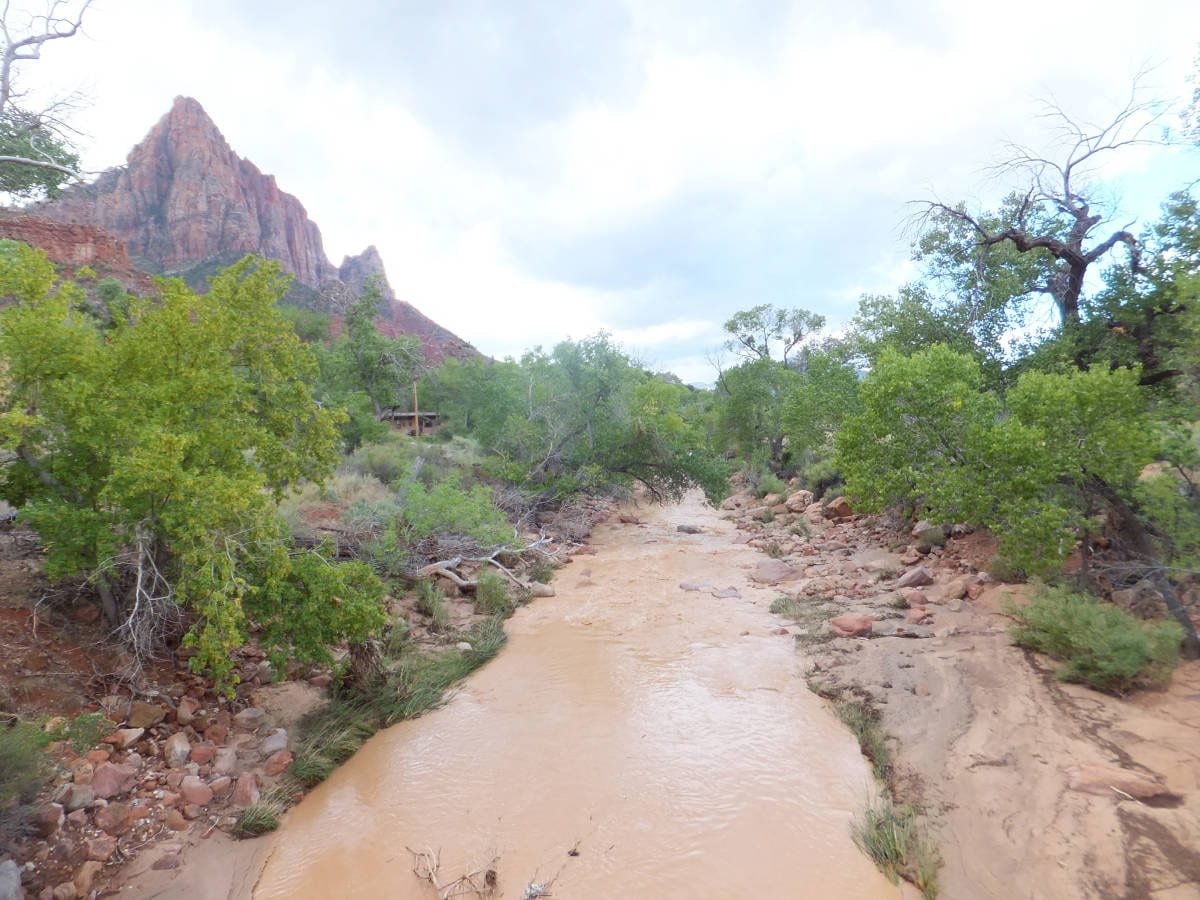
UPDATE 9/17 12:25 p.m.:
The body of a seventh hiker was found by search and rescue teams in Zion National Park. 19 deaths have now been caused by flash flooding on September 14. Names of the victims have not been released by Zion National Park but the Ventura, California County Sheriff’s Office said that one of those killed in Zion National Park was sheriff’s Sergeant Steve Arthur.
UPDATE:
Zion National Park Public Information Officer now reports 6 confirmed fatalities with 1 hiker still missing.
UPDATE:
A fifth body has been found. Two are still missing.
Original Story:
Officials at Zion National Park updated a media storm of reporters about the Keyhole Canyon flash flood victims at a press conference held at the Zion National Park Emergency Operations Center on Wednesday, Sept. 16. Park officials confirmed that there were four fatalities in the Keyhole Canyon flash flood just off State Road 9 on the east side of Zion Park that took place on Monday, Sept. 14. Three persons are still missing. Six of the victims are from California, and one was from Nevada. The party consisted of four men and three women. The park service is withholding names at this time.

Zion Park Superintendent Jeff Bradybaugh covered the timeline of the tragedy in Keyhole Canyon. The party picked up a permit to hike in Keyhole Canyon at 7:40 on Monday morning. At 2:22 p.m., Zion National Park received the first flash flood warning from the National Weather Service. All canyons in the Park were closed to canyoneering at that time. The potential for flash flooding was immediately obvious since the Virgin River rose from about 55 cubic feet per second (cfs) to over 2,500 cfs in about 15 minutes and flash flooding was noted in several of the side canyons. The flow in the North Fork of the Virgin reached 2,630 at 5:30 pm and 2,740 at 5:45 pm.
Another canyoneering group that had just exited Keyhole Canyon notified the Park Service that they had passed the group caught in the flood as they were entering the canyon. The Park Service located the victims’ vehicle, but due to the canyon flooding, a rescue operation wasn’t possible. A search was started at dawn the next day, but due to the weather, Keyhole Canyon itself still couldn’t be entered. Conditions later improved, and SAR personnel found the first body below the canyon at 1:30 p.m. At 2:30 p.m., a private canyoneering group went through the canyon and reported another body. At about 4:00 p.m., a third body was located below the canyon, and the fourth body was located at about 5:30 p.m.
A search for the three missing persons is continuing with approximately sixty members of various local, state, and federal agencies. Due to weather conditions, the technical portions of Keyhole Canyon and Clear Creek Canyon below it had still not been completely searched as of Wednesday morning. The canyons are closed, and no permits are being issued until further notice.

The Zion Park Incident Commander, Therese Pickard, said that canyoneering in slot canyons in Zion Park is an incredibly popular activity. She said that canyoneering is a combination of hiking, rappelling, swimming, problem solving, and route finding. In Zion National Park, canyoneering is done in unmaintained canyons that can be described as the wilderness. The conditions in any given canyon are constantly changing and require a lot of technical skill and judgment. Although Keyhole Canyon is a short canyon that can be done in 30 minutes by very experienced and well-equipped canyoneers, it is a very technical canyon, and less experienced persons or persons who have to share equipment such as a rope might take considerably longer.
Pickard said that although the Park Service does require permits and provides complete information on canyons and weather conditions, they cannot assess whether persons have the skill or equipment necessary for any particular trip. In this particular case, the Park Service did determine that the members of the party did have at least some experience, training and equipment for canyoneering. Once a trip into a slot canyon has started, Pickard said communication with the group in the narrow and deep canyon was impossible.
The Hildale flood victims and the Keyhole Canyon victims together make Sept. 14, 2015, the deadliest day for flood fatalities in Utah history, with the possible exception of the flood year of 1862 when entire towns, such as the Grafton ghost town on the Virgin River, were completely washed away. According to the National Weather Service, only five flood fatalities were recorded for all of Utah in 2014. Only 38 were recorded for the entire nation last year, one of which was recorded in Zion National Park last year when he failed to reach high ground during a flood.
Zion National Park spokeswoman Aly Baltrus said that the Park was hopeful that survivors might still be found but that it’s not looking good.




